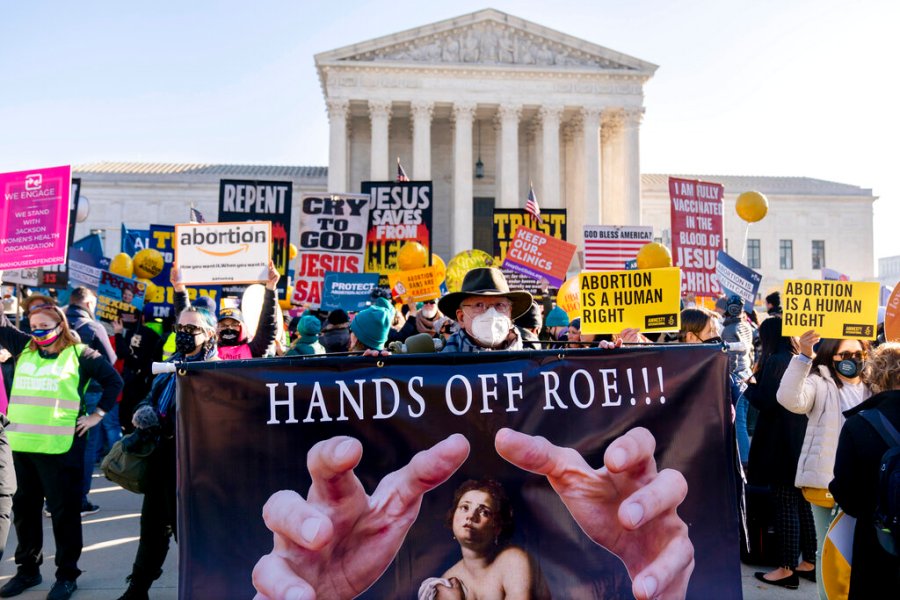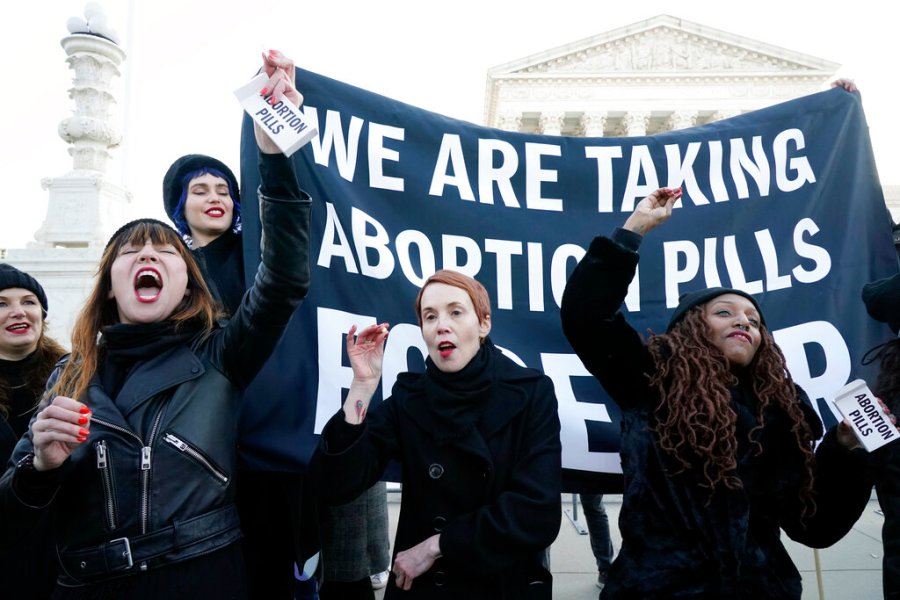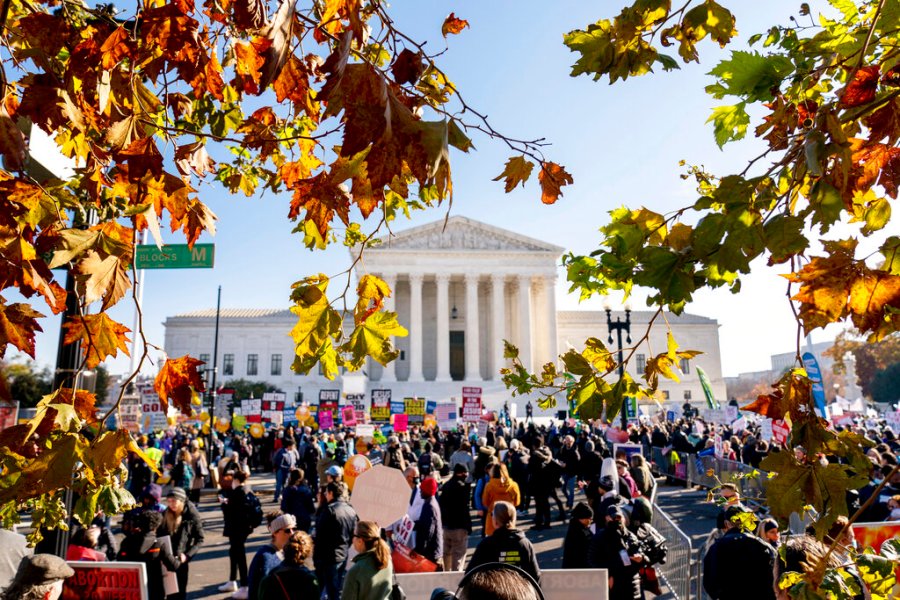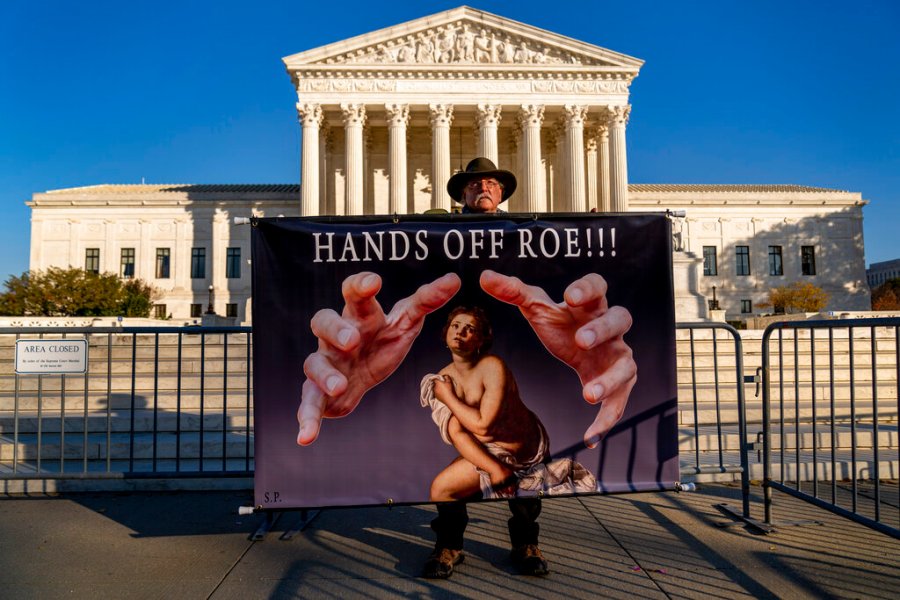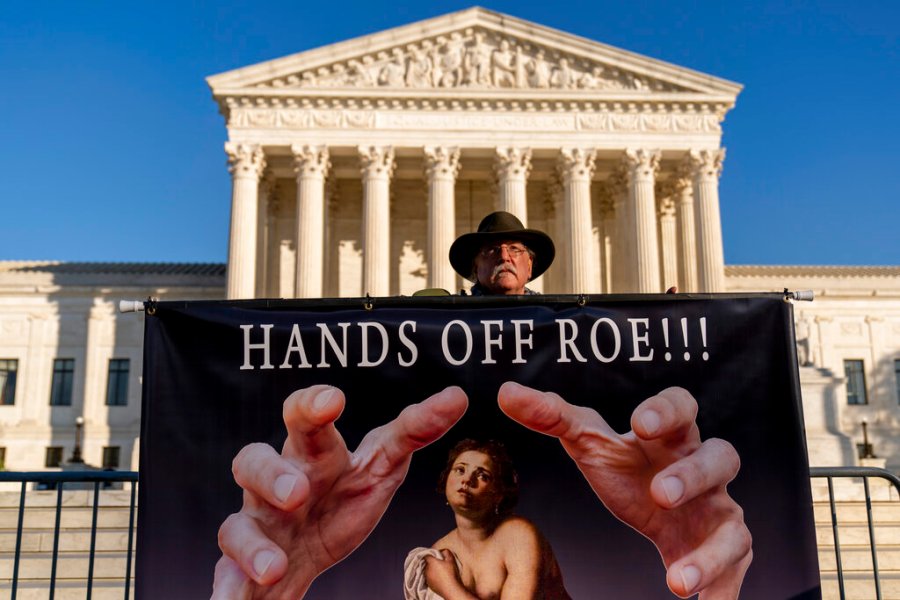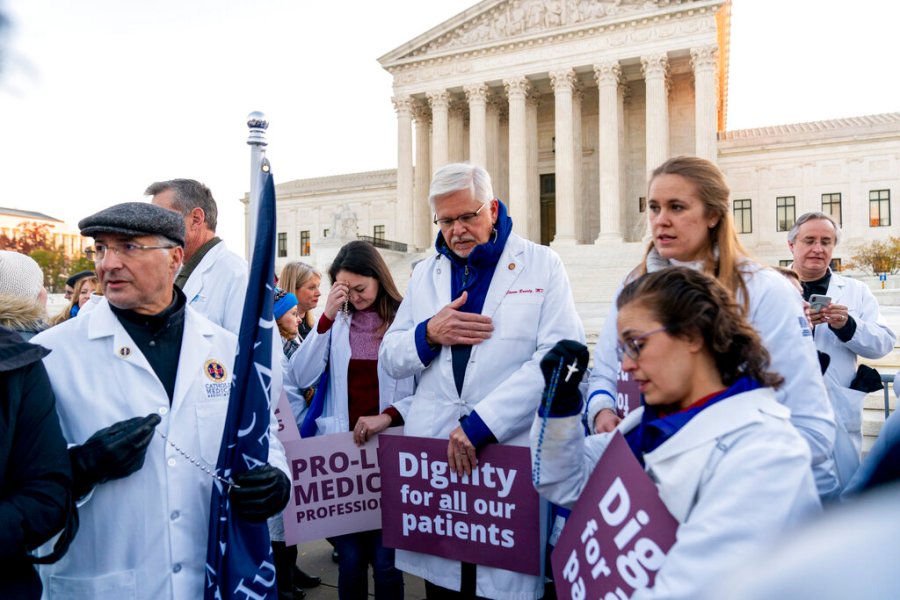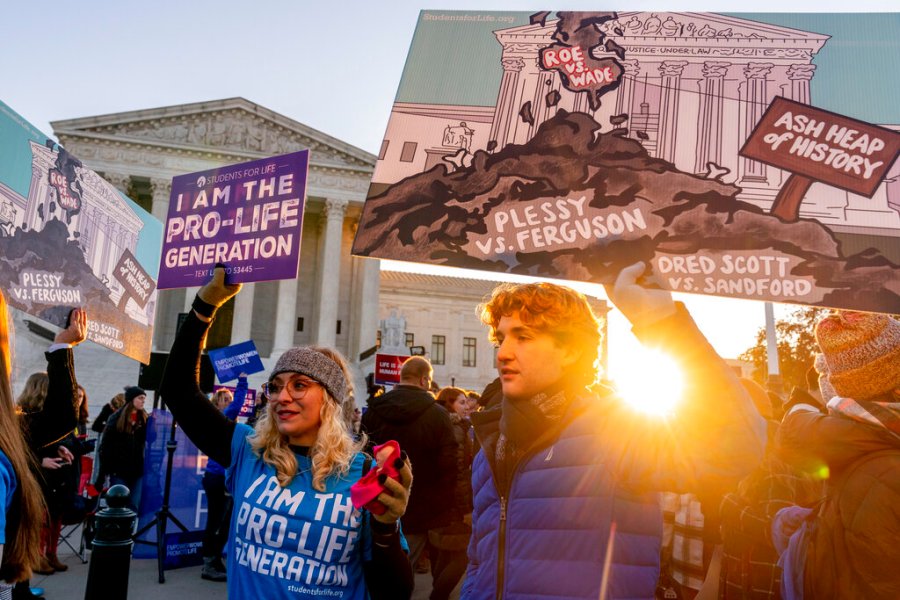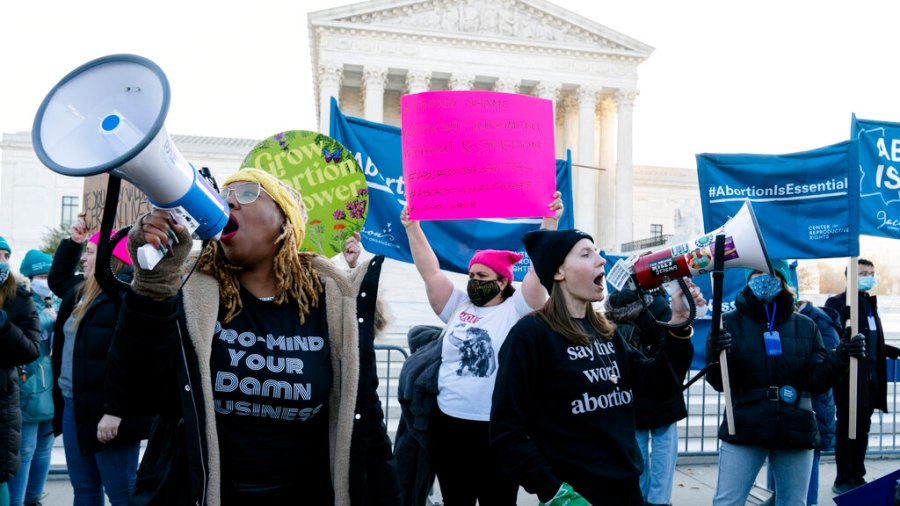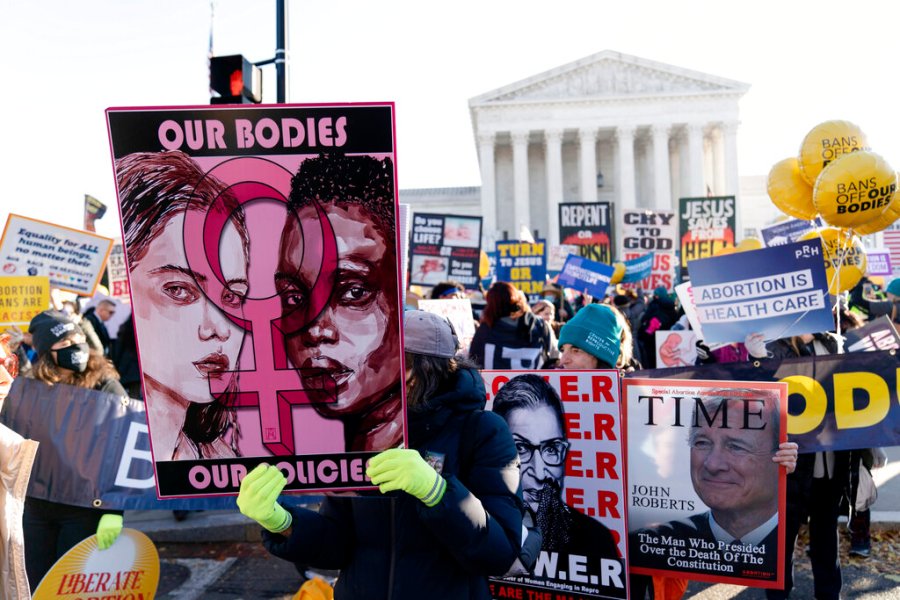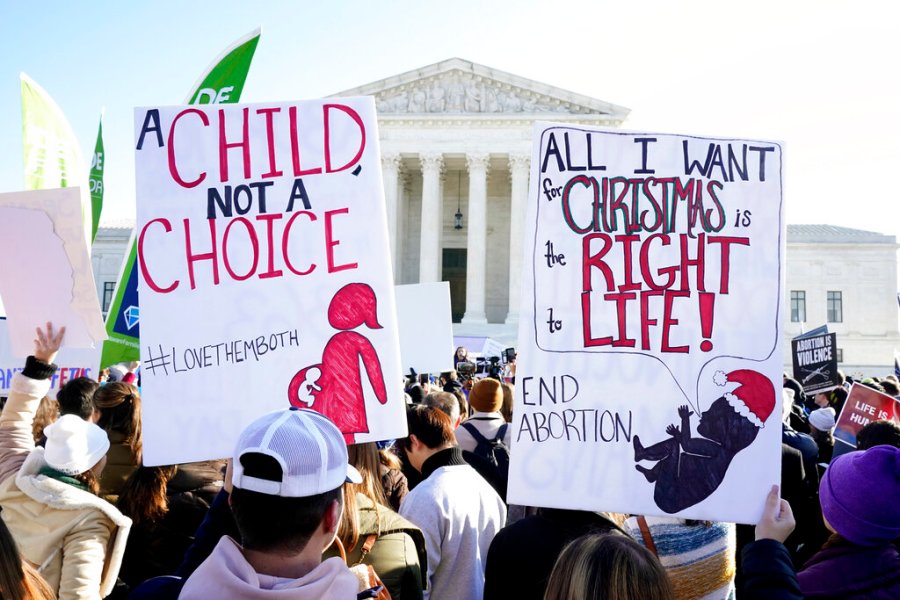Justices signal they’ll OK new abortion limits, may toss Roe v. Wade
WASHINGTON (NewsNation Now) — The Supreme Court’s conservative majority on Wednesday signaled it would uphold Mississippi’s 15-week ban on abortion and may go much further to overturn the nationwide right to abortion that has existed for nearly 50 years.
The fate of the court’s historic 1973 Roe v. Wade decision legalizing abortion throughout the United States and its 1992 ruling in Planned Parenthood v. Casey, which reaffirmed Roe, probably won’t be known until next June.
But after nearly two hours of arguments, all six conservative justices, including three appointed by former President Donald Trump, indicated they would uphold the Mississippi law.
At the very least, such a decision would undermine Roe and Casey, which allow states to regulate but not ban abortion up until the point of viability, at roughly 24 weeks.
NewsNation discussed the arguments on all sides. Watch the breakdown in the player below.
The case came to a court with a 6-3 conservative majority that has been transformed by three appointees of President Donald Trump, who had pledged to appoint justices he said would oppose abortion rights. The court had never agreed to hear a case over an abortion ban so early in pregnancy until all three Trump appointees — Justices Neil Gorsuch, Brett Kavanaugh and Amy Coney Barrett — were on board.
Mississippi argues that viability is an arbitrary standard that doesn’t take sufficient account of the state’s interest in regulating abortion. It also contends that scientific advances have allowed some babies who were born earlier than 24 weeks to survive, though it does not argue that the line is anywhere near 15 weeks.
Kavanaugh asked a series of questions about whether the court would be better off withdrawing from the abortion debate and letting states decide.
“Why should the court be the arbiter?” Kavanaugh asked. “There’ll be different access in Mississippi and New York, Alabama and California.”
Abortion would soon become illegal or severely restricted in roughly half the states if Roe and Casey are overturned, according to the Guttmacher Institute, a research organization that supports abortion rights. Legislatures in many Republican-led states are poised for action depending on the Supreme Court’s next decision.
The court’s three liberal justices said that reversing Roe and Casey would significantly damage the court’s legitimacy.
“Will this institution survive the stench that this creates in the public perception that the Constitution and its reading are just political acts?” Justice Sonia Sotomayor asked.
Justice Elena Kagan said the abortion decisions are “part of the fabric of women’s place in this country.”
Among the conservatives, Chief Justice John Roberts appeared most interested in a less sweeping ruling that would uphold the Mississippi law, but not explicitly overrule Roe and Casey.
“That may be what they’re asking for, but the thing at issue before us today is 15 weeks,” Roberts said, alluding to Mississippi’s call to overturn the broader cases.
Erasing viability as the line between when abortions may and may not be banned would effectively overrule Roe and Casey, even if the justices do not explicitly do that, the clinic says.
As conservatives make gains, pro-choice activists say this is a matter of public safety, as illegal abortions would continue.
“If we want women’s full participation in society, we need to make sure we keep this legal and safe and accessible,” said pro-choice activist Heather Booth to NewsNation.
In its earlier rulings, the court has rooted the right to abortion in the section of the 14th Amendment that says states cannot “deprive any person of life, liberty, or property, without due process of law.”
Abortion arguments normally would find people camped out in front of the court for days in the hope of snagging some of the few seats available to the public. But with the courthouse closed because of COVID-19, there will be only a sparse audience of reporters, justices’ law clerks and a handful of lawyers inside the courtroom. Large crowds gathered outside the Supreme Court Wednesday, blocked by a barrier, to protest the arguments.
“Whose choice?” “My choice,” was a frequent call-and-response on the abortion rights side, countered by “Hey hey, ho ho, Roe v. Wade has got to go.”
Jo Luttazi, wearing gloves emblazoned with “Bans Off Our Bodies” on the palms, said everyone should have access to abortion as a form of health care.
A month ago, the justices also heard arguments over a uniquely designed Texas law that has succeeded in getting around the Roe and Casey decisions and banning abortions in the nation’s second-largest state after about six weeks of pregnancy. The dispute over the Texas law revolves around whether the law can be challenged in federal court, rather than the right to an abortion.
Despite its unusually quick consideration of the issue, the court has yet to rule on the Texas law, and the justices have refused to put the law on hold while the matter is under legal review.






